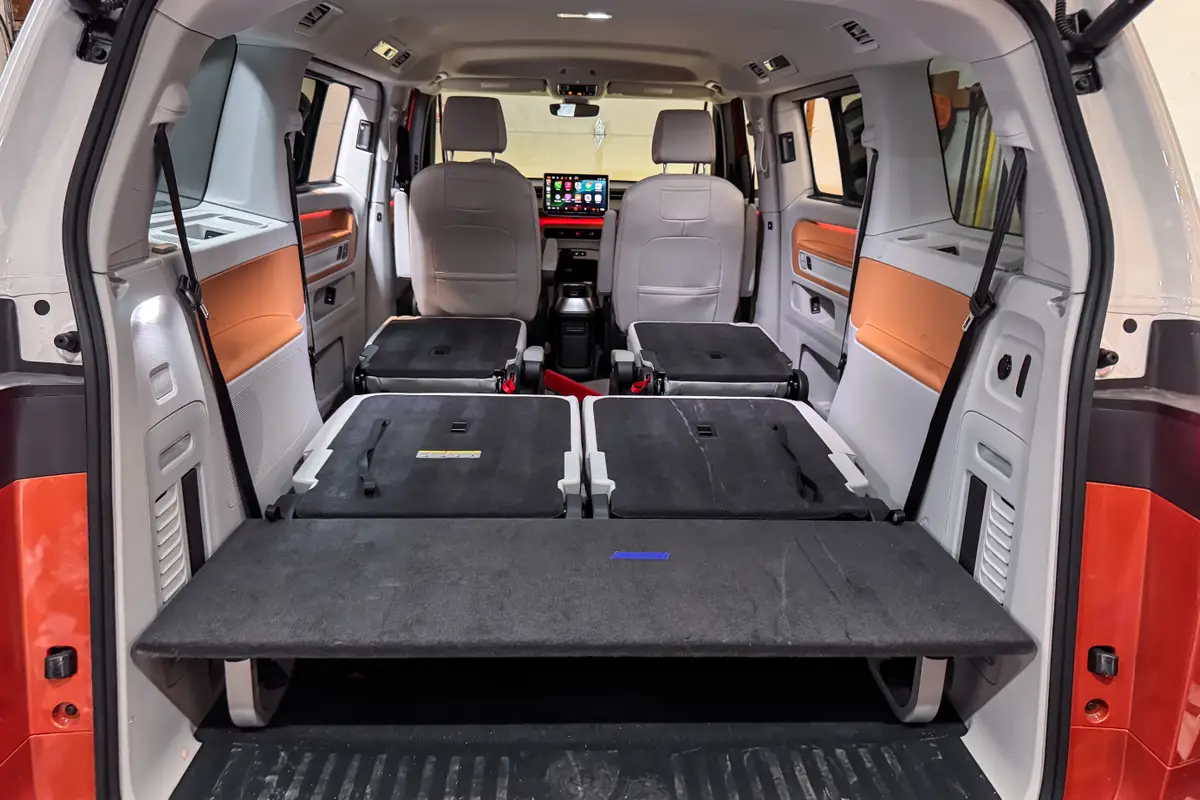chicagotribune.com's view
Both cars sport the same engine, yet they have separate and distinct personalities.
The Pontiac Grand Prix GTP coupe and STE sedan are midsize W-body cars in the General Motors stable. The GTP is the sports performance model and replacement for last year`s Turbo coupe, and the STE is the sporty luxury cruiser bearing the name last used on the midsize Pontiac 6000, which has been dropped from the lineup.
What makes both cars special is the new 3.4-liter, 24-valve V-6 engine. With five-speed manual, the 3.4 generates 210 horsepower in the GTP; with four-speed automatic, it`s 200 h.p. in the STE.
The 3.4 is the long-awaited and long-delayed multivalve V-6 aimed at giving the midsize GM car line the power the 3.1-liter, 140-h.p. V-6 wasn`t designed to deliver. Whether sedan or coupe, the exhaust has built-in roar, a touch of performance sound effects to help foster the power image.
Three GM divisions now offer the 3.4-liter V-6: Pontiac in the STE and GTP, Oldsmobile in the Cutlass Supreme and Chevrolet in the Lumina Z34. In keeping with its luxury image, Buick chose to offer the 170-h.p., 3.8-liter V- 6 in the Regal rather than the 3.4.
Despite the power, the mileage rating is a respectable 17 miles per gallon city/27 m.p.g. highway with the GTP, 17/26 with the STE.
The 3.4 is lively and further adds to the performance image at Pontiac. Too bad the five-speed manual in the GTP isn`t more cooperative. The lever is a bit notchy, and the clutch is so stiff we suspect that, after one year`s driving, owners will build up enough muscle to be able to kick down metal- reinforced doors with their left legs.
You would have thought Pontiac had learned from Ford and all the complaints over the stiff clutch in the Thunderbird Super Coupe. Ford redesigned the clutch, the complaints declined and sales went up.
Both Pontiacs offer road-hugging suspensions and above-average ride and handling. The STEis a bit softer sprung, the GTP a bit firmer. Obviously the thinking was that more people are likely to take the turns at speed in the GTP coupe than in the STE sedan.
Both also feature sporty styling. The GTP carries an abundance of decorative plastic wrapping to dress up what is a rather ordinary-looking Grand Prix coupe underneath.
The STE, meanwhile, also is fitted with plastic fashion accessories and closely resembles the larger Bonneville SSE. In fact, the STE it looks to be an SSE in miniature-for about $5,000 less.
Sadly, however, though the STE is aimed at those whose incomes may not yet beat the SSE ($28,000) stage, one reason is that the car doesn`t offer antilock brakes as standard. ABS is a costly $925 option in the STE and GTP.
GM officials of late have boasted that by late1993, ABS will be offered in all GM vehicles. We`d rather GM brag that, by amortizing the cost over 5 million vehicles, it soon will cut the price of ABS to the consumer in half.
Performance historically has been measured in horsepower and 0- to 60- m.p.h. times. But performance lately also measures 60- to 0-m.p.h. times, and the secret to stability and control of the car in a panic stop is ABS. When the horsepower reaches 200, ABS should be standard.
Another negative is that neither the STE nor GTP offers an air bag. You get the neck grabbing/rubbing belt in the door as a safety system. The steering wheel column in both cars sports radio controls rather than an air bag. In a collision, you risk having the word “volume“ or “mute“ engraved in your nose.
While on the subject of instrumentation, each car has a design gaffe in the positioning of controls. In the GTP, the light switches to the left of the instrument panel stick out so far that several times we accidentally brushed up against them while getting out of the car, turning the lights on. On the STE, the lever controlling interior lights is so clos behind and to the left of the steering wheel that when we reached for the turn signal lever we often grabbed the interior light lever instead.
The GTP also came with a head-up display (HUD), in which the digital speedometer numbers are reflected onto the lower windshield so the driver needn`t take eyes off the road to keep track of speed.
HUD takes some getting used to, especially after years of being accustomed to glancing at the speedometer in the instrument panel. We also found the HUD a bit annoying in that it was slightly off center.
Our favorite among the two cars was the STE, largely because the larger SSE, which it so strongly resembles in appearance and performance, is one of our favorites.
It seems the buying public likes the sedan, too. The Grand Prix coupe was brought out in 1988 and finished the year with sales of 76,723 units, then climbed to 117,761 units in 1989. The sedan was introduced in 1990, and coupe sales tumbled to 64,621 units while the sedan was at 49,999. In the first five months of the 1991 model year, sedan sales are double those of the coupe.
Standard equipment on the STE sedan includes power brakes and steering, four-wheel independent rally-tuned suspension, 16-inch Eagle GT+4 radial tires, air conditioning, power driver`s seat, AM/FM stereo with cassette, clock, power antenna, cruise control, dual power mirror, and power windows and door locks.
Baseprice is $19,994. Our test car added the 3.4 V-6 for $995 and a transmission oil cooling system for $75. The four-speed automatic is a no-cost option. The sticker, after a $485 freight charge, ran $21,549. Had the car been equipped with the $925 antilock brakes, the sticker would have approached $22,500.
The GTP coupe is the GT coupe with the $995 3.4-liter V-6 and the $2,595 aero performance package added.
Standard equipment includes the same items as in the STE sedan plus front and rear floor consoles and fog lamps.
Base price is $19,154. Our test car added a pile of option packages. Option Pack No. 1 included remote keyless entry, illuminated visor mirrors, power antenna, head-up instrument display, electronic compass with trip computer and service reminder for $811. The Value Pack Option added antilock brakes and radio upgrade to AM stereo/FM stereo with compact disc player for $1,151. The Aero Performance Package added the plastic ground effects and wheel flares, wide bodyside moldings, crosslace aluminum wheel covers and functional hood louvers for $1,595.
The 3.4-liter V-6 at $995, leather front bucket seats at $450, larger P245/50ZR16 steel-belted blackwalls at $247 and rear-window defogger at $160 were other options. The options were discounted by $2,350. The car stickered at $23,013, and with the $485 in freight totaled $23,498.
1991 Pontiac Grand Prix GTP
Wheelbase: 107.5 inches Length: 194.8 STE/193.9 GTP Engine: 3.4 liter V-6, 200 h.p. in STE/210 h.p. GTP Transmission: 4-speed automatic STE/5-speed manual GTP Fuel economy: 17 m.p.g. city/26 m.p.g highway STE-17/27 GTP Base price: STE-$19,994/GTP-$19,154 plus $2,595 aero package and $995 for 3.4 V-6. Strong point: STE looks like a Bonneville SSE in smaller form–and acts like one, too, with the 3.4 V-6 and road hugging suspension. Ditto the liveliness from the 3.4 and suspension in the GTP, plus ample dose of sporty styling thanks to the miracle of plastic. Weak point: Antilock brakes a costly $925 option in both cars. Air bags not offered in either car. Clutch in GTP guaranteed to build up, if not tear down, calf muscles. >>
Latest news



